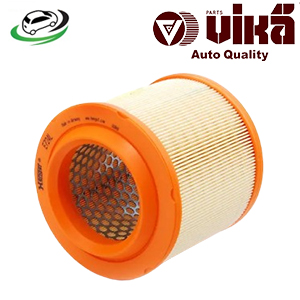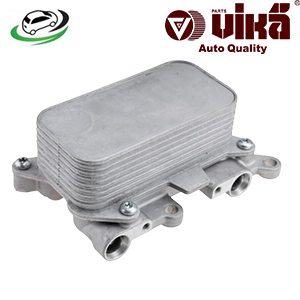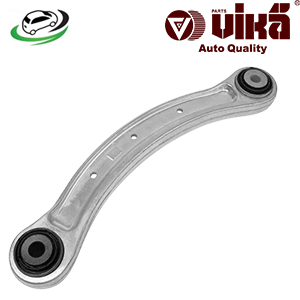-15%
Get Front Driver Forward Lower Control Arm AUDI A4 2.0L/ A5 2.0L/ A6 2.0L/ Q5 2.0L/ S4 3.0L/ S5 3.0L 8K0407151C
The front driver forward lower control arm is a vital component of a vehicle’s suspension system. It plays a crucial role in maintaining vehicle handling, ride quality, and overall safety. This overview explores the function, construction, common issues, maintenance, and benefits of the front driver forward lower control arm.
Function of the Front Driver Forward Lower Control Arm
The front driver forward lower control arm is a key part of the vehicle’s suspension system. It connects the vehicle’s chassis or subframe to the wheel assembly, providing several critical functions:
- Vehicle Alignment:
- Suspension Geometry: The control arm helps maintain proper alignment of the wheels, ensuring that they are correctly positioned for optimal handling and stability.
- Camber and Toe Angles: By supporting the suspension components, the control arm helps control the camber and toe angles of the wheels, which affects tire wear and handling.
- Suspension Movement:
- Articulation: The control arm allows for the up-and-down movement of the suspension while keeping the wheel in alignment with the vehicle’s chassis. This articulation is essential for absorbing road impacts and maintaining a smooth ride.
- Handling and Stability: It helps manage the forces and movements experienced during driving, such as acceleration, braking, and cornering, contributing to overall vehicle stability.
- Load Distribution:
- Weight Transfer: The control arm supports the weight of the vehicle and distributes the load evenly across the suspension system. This helps ensure that the vehicle’s weight is balanced, improving handling and ride quality.
- Vibration and Shock Absorption:
- Impact Management: By connecting the wheel assembly to the chassis, the control arm helps absorb and dampen road shocks and vibrations, contributing to a smoother driving experience.
Construction of the Front Driver Forward Lower Control Arm
The front driver forward lower control arm is constructed from several key components, each designed to ensure durability and performance:
- Control Arm Frame:
- Material: The frame of the control arm is typically made from high-strength steel or aluminum. Steel provides durability and strength, while aluminum offers reduced weight and improved performance.
- Design: The frame is designed to withstand the stresses and forces exerted during driving while maintaining the correct suspension geometry.
- Bushings:
- Rubber or Polyurethane: The control arm is equipped with bushings, usually made from rubber or polyurethane, that provide cushioning and flexibility. These bushings help absorb vibrations and allow for controlled movement of the control arm.
- Mounting Points: Bushings are located at the points where the control arm attaches to the vehicle’s chassis and the wheel assembly. They help reduce noise and maintain proper alignment.
- Ball Joint:
- Articulation: The control arm typically features a ball joint that allows for the smooth movement of the wheel assembly. The ball joint provides a pivot point for the wheel, enabling it to move up and down while maintaining alignment.
- Lubrication: Many ball joints are equipped with grease fittings or sealed bearings to ensure proper lubrication and reduce wear.
- Mounting Hardware:
- Bolts and Nuts: The control arm is secured to the vehicle’s chassis and the wheel assembly using bolts and nuts. These fasteners must be properly torqued to ensure the control arm remains securely in place.
Common Issues and Symptoms
Over time, the front driver forward lower control arm can experience wear and damage, leading to several issues. Recognizing the symptoms of a failing control arm can help address problems before they affect vehicle safety and performance:
- Clunking or Knocking Sounds:
- Symptom: Unusual clunking or knocking noises from the front suspension, especially when driving over bumps or making turns, can indicate a worn or damaged control arm or its bushings.
- Cause: Worn bushings or ball joints may cause excessive movement, leading to these noises.
- Poor Handling and Steering:
- Symptom: A noticeable decline in handling and steering responsiveness can be a sign of a failing control arm.
- Cause: If the control arm is damaged or its bushings are worn, it can affect wheel alignment and steering precision.
- Uneven Tire Wear:
- Symptom: Uneven or premature tire wear, particularly on the inner or outer edges of the tires, can result from a faulty control arm affecting wheel alignment.
- Cause: Misalignment caused by a damaged control arm can lead to uneven tire wear patterns.
- Vibration or Harsh Ride:
- Symptom: Excessive vibration or a harsh ride quality can indicate problems with the control arm or its bushings.
- Cause: Worn or damaged bushings may fail to absorb shocks and vibrations properly, affecting ride comfort.
- Visual Signs of Damage:
- Symptom: Visible signs of damage, such as cracks, bends, or rust on the control arm, indicate that it may need to be replaced.
- Cause: Physical damage can compromise the integrity of the control arm, affecting its performance.
Maintenance and Replacement
Proper maintenance and timely replacement of the front driver forward lower control arm are essential for maintaining vehicle safety and performance:
- Regular Inspection:
- Check Interval: Inspect the control arm regularly, particularly during routine maintenance or if you notice any symptoms of wear or damage.
- Visual and Physical Checks: Look for signs of damage, such as cracks or bends, and check for excessive movement or play in the bushings and ball joints.
- Replacement:
- When to Replace: Replace the control arm if it is visibly damaged, or if the bushings or ball joint are worn out. Ignoring these issues can lead to more significant problems and affect vehicle safety.
- Procedure: To replace the control arm, lift the vehicle securely, remove the old control arm and its associated hardware, and install the new control arm. Ensure that all fasteners are properly torqued and that the alignment is checked and adjusted if necessary.
- Professional Help:
- Expert Diagnosis: If you are unsure about diagnosing or replacing the control arm yourself, consult a professional mechanic. They can provide accurate diagnosis, ensure proper installation, and check for any related issues.
- Alignment Checks:
- Post-Replacement: After replacing the control arm, have the vehicle’s alignment checked and adjusted as needed. Proper alignment is crucial for optimal handling and tire wear.
Benefits of a Well-Maintained Control Arm
Maintaining the front driver forward lower control arm in good condition offers several benefits:
- Improved Handling and Stability:
- Enhanced Performance: A properly functioning control arm ensures that the suspension system works as intended, contributing to improved handling, stability, and steering responsiveness.
- Comfortable Ride:
- Smooth Ride: By absorbing road shocks and vibrations, a well-maintained control arm contributes to a smoother and more comfortable ride for passengers.
- Extended Tire Life:
- Even Wear: Proper alignment and suspension performance help ensure even tire wear, extending the lifespan of the tires and reducing the need for frequent replacements.
- Safety:
- Reliable Performance: A functional control arm is essential for maintaining vehicle safety. It ensures that the wheels remain properly aligned and responsive, which is crucial for safe driving and handling.
- Cost-Effectiveness:
- Preventative Maintenance: Regular inspection and timely replacement of the control arm can prevent more significant suspension issues, saving on potential repair costs and enhancing overall vehicle reliability.
Follow us on Facebook for more parts.





